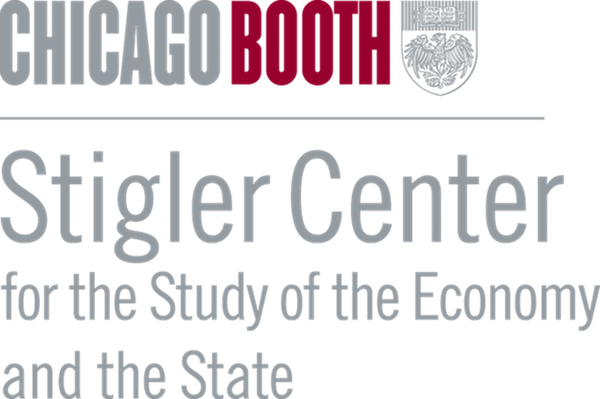A new study argues that declining interest rates are in fact the cause of the recent decline in competition.
Corporate profits in the United States have been steadily increasing since the early 1980s. Academic researchers and nobel laureates, the Council of Economic Advisers, media outlets like The New York Times, The Economist and The New Republic, and elected officials have recently written about the negative consequences of rising profits and declining competition. Despite the obvious importance of the rise in corporate profits, we know very little about its underlying causes.
In a recent study with Seth Benzell, I presented aggregate measures of profits for the US corporate sector over the past 70 years. The data clearly show low profits in periods of high interest rates (e.g. early 1980s) and high profits in periods of low interest rates (e.g. late 1940s and today). Some have suggested that mechanical errors in the calculation of profits are responsible for this striking fact. However, this pattern of high profits in periods of low interest rates appears in measures of corporate profits that are calculated from different data sources using vastly different techniques. Motivated by these aggregate facts, two recent papers argue for an economic relationship in which an increase in market power causes an equilibrium decline in the interest rate.
A new study by Ernest Liu, Atif Mian, and Amir Sufi presents a theoretical model and empirical evidence arguing that the declining interest rate is in fact the cause of the recent decline in competition. The richness of the model allows the authors to simultaneously explain many important features of the macro-economy over the past 30 years.
I will try to lay out the main features of the model and empirical results. The paper is very rich and offers nice results that go beyond what I describe. I have tried to limit myself to the essential points and I strongly recommend reading the paper. At the end, I will discuss two underlying mechanisms in the model that I would like better understand and that perhaps could be explored in future work.
Low Interest Rates and Monopolized Industries
The model (with minor alterations for illustrative purposes) features firms that compete with one another to gain market share and profits. The only way for a firm to gain market share is to produce a better product at a lower cost than its competitor. So long as no particular firm in the industry has a decisive edge, all firms will invest heavily in the design of better products and better methods of production. So long as markets remain competitive, these gains in the form of better products and lower costs are passed on to consumers. The prospect of gaining an edge over competitors and monopolizing the industry at some point in the future incentivizes investment today and grows the economy.
While the promise of future monopolization spurs economic growth and gains to consumers, monopolized industries provide no such benefit. Once a single firm manages to gain a sufficiently large competitive edge, other firms understand that they stand very little chance of clawing back significant market share and essentially give up. After competitors drop out, the leading firm no longer has any incentive to produce better products or offer consumers lower prices. The only concern of a leader in a monopolized industry is to maintain its market position.
At a lower interest rate, future cash flows are more valuable and as a result, the benefit of future monopolization increases. The increased value of future monopolization has three effects. First, it causes firms to compete more intensely in competitive industries. Second, it re-introduces competition into industries where trailing firms had given up hope of overtaking the current leader. The internal calculations of trailing firms now make them view the same investment as more attractive. Lastly, it gives market leaders an even greater incentive to ward off competition. Losing market share becomes far more costly at low interest rates and competitors have a greater incentive to stay active. If industry leaders are comfortable with being three steps ahead of their competitors when interest rates are high, they will try to remain four steps ahead when interest rates decline.
While the first two incentives induced by lower interest rates (increasing competition in competitive industries and re-introducing competition in some monopolized industries) are pro-competitive, the third effect (industry leaders having a greater incentive to ward off competition) is anticompetitive. Which of these effects do we expect should dominate?
Perhaps the key insight of the paper is that we should expect the anticompetitive effects of lower interest rates to dominate the pro-competitive effects. The intuition is as follows. At any point in time, some industries will be competitive and others monopolized. The amount of time that a given industry remains dominated by a single firm determines the (steady state) fraction of industries that are monopolized. When interest rates are very high, dominant firms are unwilling to invest heavily today to prevent the loss of future market share. This unwillingness results in monopolized industries that revert back to competitive industries quickly. As interest rates decline, dominant firms invest more and more to prevent future loss of market share. These actions on the part of dominant firms result in monopolized industries that stay monopolized for longer.
It is interesting to contrast this model to Romer (1989). Romer presents a model in which economic growth is generated by the production of new goods and services. In order to incentivize entrepreneurs, the government offers monopoly rights in the form of a patent. In such a setting, a lower interest rate increases the gains from successfully producing a new good or service and therefore encourages more households to engage in entrepreneurial activities. As a result, in the Romer model lower interest rates spur greater economic growth. The key distinguishing feature of Liu, Mian, and Sufi is that entrepreneurship is always destructive. Firms generate profits by taking away market share from an incumbent. The model allows incumbent firms to take actions designed to prevent new entrepreneurial activities in their industry. In Romer’s model, there is no one standing in the way of entrepreneurship.
| Perhaps the key insight of the paper is that we should expect the anticompetitive effects of lower interest rates to dominate the pro-competitive effects. |
Empirical Evidence
Before describing the empirical results of the paper, it is worth thinking through the two distinct channels through which interest rates affect market valuations. First (mechanical), at lower interest rates all future cash flows are more valuable. Even if firms were unable to respond in any way, we would expect a decline in the interest rate to result in higher valuations of all firms since all future cash flows are discounted at a lower rate. Second (strategic), a decline in the interest rate can affect the future cash flows of firms. If dominant firms are now willing to take action to preserve their monopoly, then their future cash flows increase and the future cash flows of their competitors decrease.
The mechanical effect of declining interest rates (increasing the value of all future cash flows) should lead to a similar proportional increase in the market valuation of all firms. The strategic effect of declining interest rates (mediated through the incentives to gain and maintain market share) should result in a larger proportional increase in the value of dominant firms. The paper sets out to provide empirical evidence of the strategic effect of declining interest rates.
Liu, Mian and Sufi present two sets of regressions that test this empirical prediction (larger proportional gains in market valuation for dominant firms). In the first set of results, the authors present firm-level regressions of stock returns on changes in the interest rate. They find that declines in the interest rate lead to significantly larger gains for dominant firms (defined as the top 5 percent in an industry, with alternative definitions for robustness).
In addition to the firm-level regression analysis, the paper presents portfolio analysis. The authors construct a portfolio that goes long on industry leaders and shows that declines in the interest rate result in abnormal returns (higher than what you would expect based on the exposure of the portfolio to a range of factors).
Discussion
In the model presented by Liu, Mian and Sufi, productivity growth is the result of firms competing for market share in contestable industries. Furthermore, in these contestable industries the gains from increased productivity are passed on to consumers (in an attempt to gain market share). A low interest rate results in low growth because it reduces the fraction of industries that (in steady state) are contestable.
Producing ever-improving products and investing in production processes that reduce costs is one way of gaining market share. There are others. Firms can advertise and invest in market research, they can merge with or acquire other firms in the industry, and they can steal technology from competitors. In order to more closely tie declining interest rates to declining productivity growth, it seems essential that we determine whether there are significant technological gains that result from competition in contestable industries.
There is a subtle point that I want to clarify. It is clear that dominant firms have additional methods of maintaining market share. These methods include, but are not limited to, purchasing potential competitors (e.g. Cunningham, Ederer, and Ma (2018) Killer Acquisitions) and lobbying government (e.g. Grotteria (2019) Follow the Money). The growth predications of the model don’t center around the behavior of dominant firms. Instead, they rely on the behavior of firms in contestable industries.
I think that the use of financial statements can help us trace out the investments that firms make as they attempt to gain market share. We have measures of R&D expenditures (and even better measures of patents), measures of advertising expenditures, and data on merger activity. I don’t have a good suggestion for a measure of technology theft, but perhaps it would be possible to look at the poaching of key employees. This list is not exhaustive, but it’s an interesting place to start.
One of the most important features of the model for analytical tractability is the assumption of gradual changes in market share. In the model, the monopolization of a market is the result of a large and persistent productivity gap between the dominant firm and its competitors. It is very difficult for a trailing firm to catch up because, at best, it can only close a small part of the gap in every period. Furthermore, a dominant firm can hold onto its monopolization of the industry by expending resources to maintain a sufficiently large gap.
At low interest rates, dominant firms in monopolized industries have a large incentive to maintain a large and persistent productivity gap. As a result, when interest rates are low, monopolized industries stay monopolized for much longer periods of time. This is the key driver of the anticompetitive effects of low interest rates.
This mechanism of low interest rates leading to an increase in the persistence of monopolization can be tested with micro data. As clearly demonstrated in the paper, this prediction is not easy to test. As the economy transitions to a steady state with lower interest rates, some previously monopolized industries will see an increase in competition due to the new and greater desire of trailing firms to gain market share. With this caveat in mind, do we see that dominant firms today are more likely to maintain their market position?
Simcha Barkai is an assistant professor of finance at the London Business School and junior fellow at the Stigler Center for the Study of the Economy and the State.
Disclaimer: The ProMarket blog is dedicated to discussing how competition tends to be subverted by special interests. The posts represent the opinions of their writers, not necessarily those of the University of Chicago, the Booth School of Business, or its faculty. For more information, please visit ProMarket Blog Policy.






